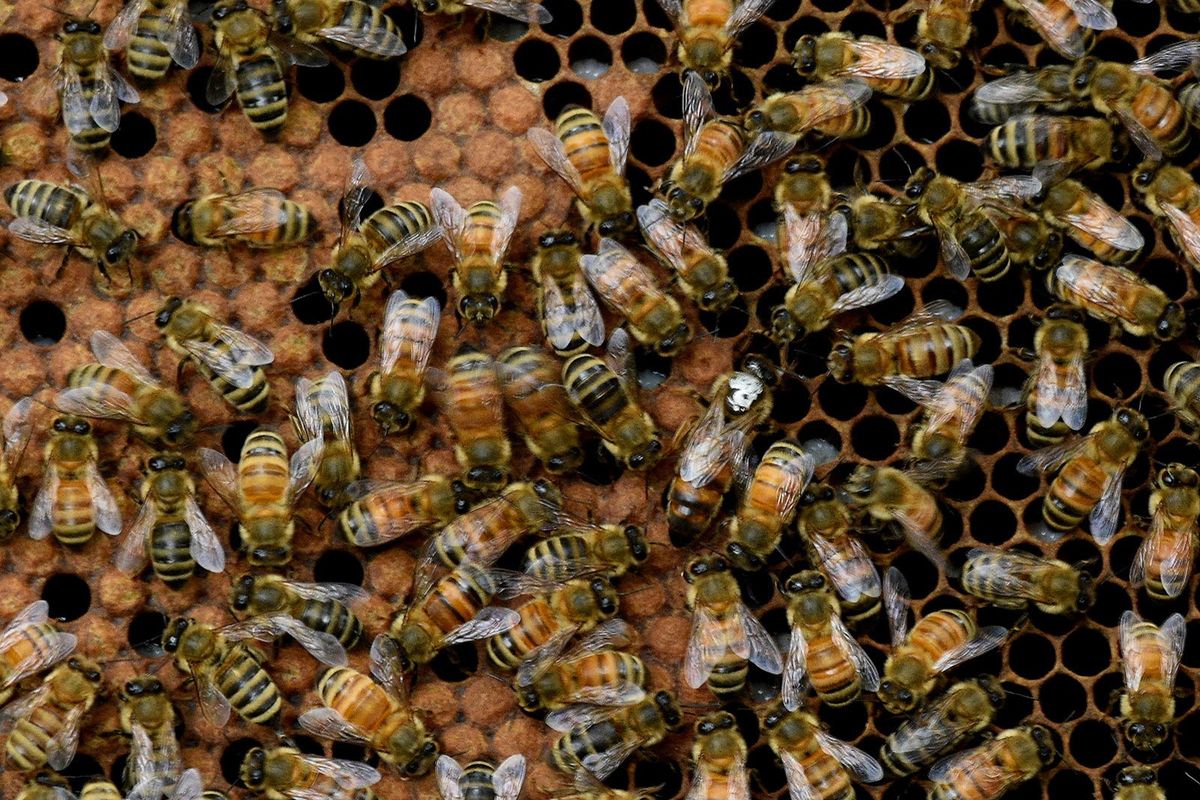Kids are abuzz with activities to help save bees

“Where have all the flowers, vegetables and fruits gone?” It’s a question we hope never to ask. For many of these plant products to exist, however, we need pollinators such as bees. For several years, bees have been threatened by pesticides, habitat loss and disease.
KidsPost talked to three kids working to help reverse that trend.
Bees feed on nectar and protein-rich pollen from flowering plants, but attracting bees to his Reston, Virginia, home wasn’t an option for J.P. Mackey, 12. His dad is allergic to bee stings, so J.P. and his mom are growing native vegetables and flowers in a nearby community garden. Sitting on a tree stump, observing bees pollinating cucumber plants, J.P. said, “We wouldn’t have food without them.”
Since December, J.P. also has raised more than $2,700 for Heifer International by creating and selling “bee bracelets.” Heifer is a charity that helps low-income people become more self-sufficient. J.P.’s family pays for his craft expenses, so 100% of each $30 bracelet sold at bumblebracelets.com provides a beehive and training for a small-scale farmer, allowing them to increase crop production and earn extra money from honey sales.
Although most native bees are solitary – nesting in ground tunnels or decaying wood instead of hives – working with honeybees allows kids to study bees up close, often sparking curiosity about other bees.
Years ago, Maia Timm invented the term “bug-studyologist” when asked what she wanted to be. Now 12, Maia is raising honeybees in her Centreville, Virginia, backyard. Wearing protective clothing, she periodically opens hives, pulling out each frame to check on bee health and honey production. Each hive’s queen bee can be seen busily laying eggs in hexagon-shaped cells.
As she works, Maia explains honeybee terms. “Royal jelly” is a protein secreted by young worker bees to feed developing bee larvae. The hive’s queen “bee bread” is protein-rich pollen mixed with honey and bee saliva and feeds the whole colony.
Maia recently donated a hive to the 4-H ECO club and science department at Liberty Middle School in nearby Clifton, where she is a rising eighth-grader. Club members will care for the hive and educate students about the vital role bees play in our ecosystem and food supply, said science teacher Donna Stebner.
For four years, Kaia Giffen, 10, helped with her family’s beehives in Darnestown, Maryland, frequently asking questions. Now she enjoys sharing her knowledge with others “so they won’t be afraid of bees.”
At a science, technology, engineering and math festival last year in nearby Gaithersburg, Kaia demonstrated honey extraction and explained the “waggle dance” – a language used by worker honeybees to tell other workers the distance to and direction of flowering plants.
Cornell University researchers found that honeybees will go to almost any host plant for pollen and nectar, while other bees can be highly specialized, visiting just a single plant species.
“If their preferred host plant disappears, these pollen-specialist bees will likely go extinct, as well,” says Bryan Danforth in a Cornell online article. Danforth is a wild-bee specialist and entomology professor.
Kids don’t need to raise bees to join the effort to stop this from happening. Do research, and create a diverse bee-friendly habitat with native flower-producing plants that bloom in different seasons. By helping bees, you also help everyone enjoy fruits and vegetables for years to come.
And what about bee stings?
Kaia, J.P. and Maia have advice for kids who are afraid to be near bees.
“Usually, bees aren’t aggressive unless they feel threatened. Most of the time, they’re just curious,” Kaia said.
“Bees bump into you as a warning,” Maia noted.
“Stand still or slowly move away, and they usually won’t bother you,” J.P. said.